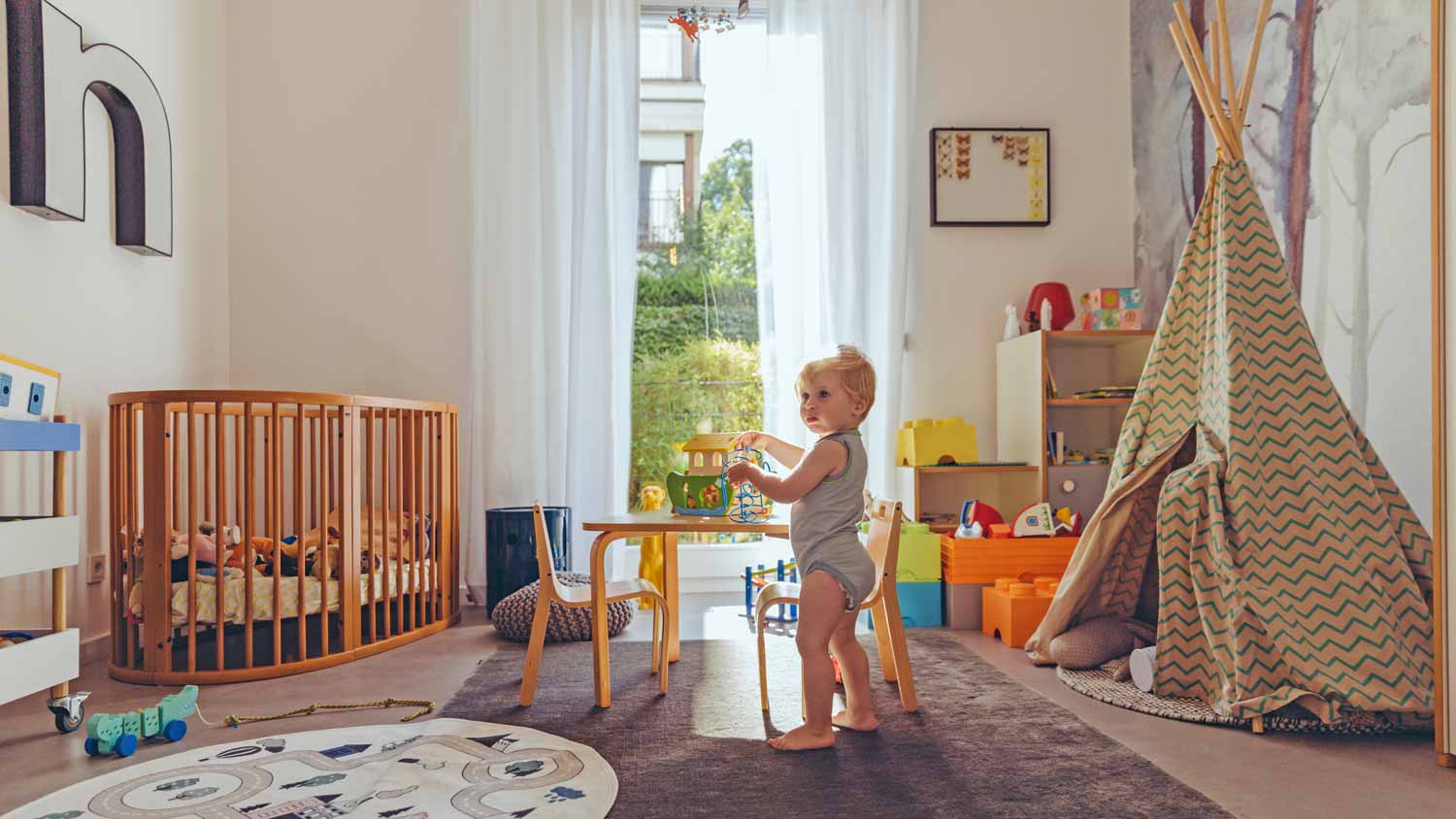
Discover the true cost of baby proofing for your home. Get detailed price breakdowns, cost factors, and tips to save on professional baby proofing.
Keep kids and pets safe this holiday season with these precautions and tips


The holiday season is a time for gatherings and festive fun—but for households with pets and children, it can also bring unexpected hazards. Between glittering decorations, sparkling lights, and a steady flow of guests, there’s a lot for little hands and paws to explore. Thankfully, you can keep your space safe for everyone with some advanced preparation. Here are 10 tips for pet-proofing and childproofing your home during the holidays.
New hazards pop up everywhere during the holiday season—think lit fireplaces, decorated staircases, and breakable floor displays. You can keep children and pets away with barriers like safety gates.
Large or top-heavy holiday decorations should be securely anchored to prevent kids and pets from knocking them over. While you’re at it, consider anchoring other items like TVs, shelving units, and heavy furniture to keep your home safe year-round.
Long extension cords stretched across walkways are tripping hazards. Toddlers and pets might also be tempted to chew on them. To prevent accidents, reroute cords along walls, tuck them behind furniture or baseboards, and use cord covers to keep them out of sight and out of reach.
Looking to warm up your house as the temperatures drop? Only use well-maintained fireplaces that are properly ventilated. Kids are particularly vulnerable to poor indoor air quality and fire-related accidents, so always supervise them when you light a fire. If you prefer space heaters instead, keep flammable items at a safe distance from them.
Before plugging in your holiday lights, check that outlets and power strips aren’t overloaded. This can lead to sparks and overheating, which can be particularly dangerous if small children or animals are nearby. Spread your decorations across multiple circuits, and use surge protectors to protect against voltage spikes.
Some holiday plants might be toxic to children and pets, including poinsettias, mistletoe, lilies, and holly. Ingesting these plants can cause gastrointestinal distress or internal issues. Consider non-toxic alternatives to decorate your home for the season, or use realistic artificial plants instead. If you really want to display traditional greenery, install floating shelves or hanging planters to keep them out of reach.

Between festive feasts and dessert spreads, the holidays bring plenty of delicious food options, but not all of them are safe for children and pets. Chocolate, alcohol, grapes, onions, and foods containing a sugar substitute called xylitol can be toxic to animals. On the other hand, children can choke on hard candy, nuts, and popcorn. Keep these items out of reach, and add childproof locks to pantry doors, trash bins, or lower cabinets.
Candles, pine needles, and dust can irritate the sensitive respiratory systems of children and pets during the holiday season. To help everyone breathe easy, give your carpets a deep clean and check that dust isn’t building up in hard-to-reach spots, like under furniture. You may also consider using a HEPA filter in your air purifier to maintain fresh air.
As adults, we tower several feet above small children and pets, which means we often miss the dangers they face every day. One potential solution? Get down on their level! Crawl around the room and take a look from their point of view. You might be surprised by what you notice—a sharp edge on a decoration, a tempting wire to tug, or a breakable bauble within reach. A few minutes of exploring from their perspective can help you eliminate risks (and it gives you a fun new view of the world, too).
While some holiday childproofing and pet-proofing tasks are easy to DIY, others may require the help of a pro. Here’s when you might need an expert:
If store-bought safety gates aren’t cutting it, consider hiring a local handyperson or carpenter to install custom-fit barriers around holiday hazards.
Local childproofing services can secure your holiday decorations with heavy-duty brackets and hardware, which are more secure (and aesthetically pleasing) than retail kits.
Have an electrician inspect your home’s electrical capacity to prevent overloading the outlets and circuits with your holiday lighting. A local electrician can also relocate existing floor outlets (or add new ones) to make them safer for your decorations.
If you plan to use the fireplace, schedule a professional chimney or fireplace inspection to ensure proper ventilation.
Local cleaning services can sanitize high-touch areas after holiday gatherings, reduce allergens and irritants, and remove small hazards throughout the home.
Hire an HVAC professional to inspect your system, replace filters, and ensure proper ventilation. This is especially important if seasonal scents are triggering allergies.